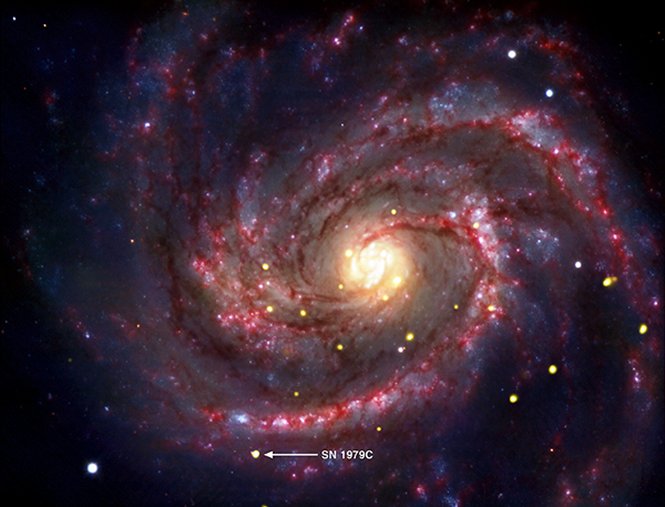Youngest-ever nearby black hole discovered
November 16, 2010

This composite image shows a supernova (SN 1979C) within the galaxy M100 that may contain the youngest known black hole in our cosmic neighborhood.
Astronomers using NASA’s Chandra X-ray Observatory have found evidence of the youngest black hole known to exist in our cosmic neighborhood. The 30-year-old object provides a unique opportunity to watch a black hole develop from infancy.
The black hole is a remnant of SN 1979C, a supernova in the galaxy M100 approximately 50 million light years from Earth. Data from Chandra, NASA’s Swift satellite, the European Space Agency’s XMM-Newton and the German ROSAT observatory revealed a bright source of X-rays that has remained steady during observation from 1995 to 2007.
This suggests the object is a black hole being fed either by material falling into it from the supernova or a binary companion.
Scientists think SN 1979C, first discovered by an amateur astronomer in 1979, formed when a star about 20 times more massive than the sun collapsed. Many new black holes in the distant universe previously have been detected in the form of gamma-ray bursts (GRBs). However, SN 1979C is different. Not only is it closer, but also it belongs a class of supernovas unlikely to produce gamma-ray bursts. According to theory, most new black holes are not announced by a bright GRB.
Although the evidence points to a newly formed black hole in SN 1979C, another intriguing possibility exists: A young, rapidly spinning neutron star with a powerful wind of high energy particles could be responsible for the X-ray emission. This would make the object in SN 1979C the youngest and brightest example of such a “pulsar wind nebula” and the youngest known neutron star.
Animation of Supernova Producing a Black Hole
Adapted from materials provided by NASA